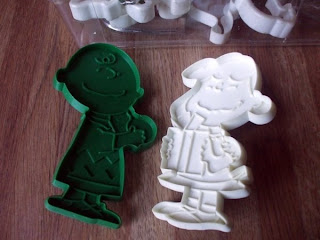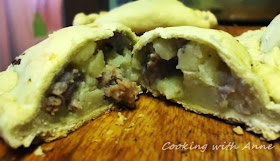
Pasta is such a diverse and widely consumed product that many people have no idea how easy it is to make your own. Pasta is also so cheap that many people wonder why one would make their own. For myself it's a feeling of accomplishment. I've always enjoyed making something that most people think can only be store-bought: cream puffs, wonton soup, fortune cookies.
The first time I ever made pasta with a machine rather than rolling it out myself was in school. Every pasta dish that was served at the school restaurant was made from fresh pasta. Making pound after pound was a bit tedious, but worth it.
Making your own pasta is like making anything else homemade; you get to be in control of what goes into it. Whole egg or egg white, salt or no salt, semolina flour or all-purpose flour. Water or not, oil or not.
Most store-bought pastas are made from semolina flour - a flour made most often from durum wheat. It's usually more coarse than standard all-purpose flour, so many people mix the two for pasta making. I've made pasta from all semolina and from half and half and I prefer the latter. All semolina makes a very stiff dough.
Here's the recipe based on what I made last week.
Basic Pasta Dough
Printable Recipe
1 cup semolina flour
1 cup all purpose flour
1 teaspoon salt
3 large eggs
I don't usually add salt to my pasta, but I was making quadrucci, which are rather large, and wanted a little more flavor because they were being served simply, in broth.
Combine flours and salt and make a well in the center. Drop 3 eggs into the well and start mixing them into the flour until a stiff dough forms. If you are making pasta on a very dry day you may want to add a tablespoon or so of water to the eggs. Cover the dough and let it stand for 10 minutes.
Roll out or run through a pasta machine and cut as desired.
Fresh pasta cooks faster than its dry counterpart, so you need to keep an eye on it as it cooks. As with dry pasta, timing depends on the size and shape of the pasta.
I made quadrucci with herbs encased in the center of each. It makes for a very pretty presentation and isn't very difficult to do. The photo above is the finished quadrucci in broth.
The making of pasta:

Stirring together egg and flour.
The first time I ever made pasta with a machine rather than rolling it out myself was in school. Every pasta dish that was served at the school restaurant was made from fresh pasta. Making pound after pound was a bit tedious, but worth it.
Making your own pasta is like making anything else homemade; you get to be in control of what goes into it. Whole egg or egg white, salt or no salt, semolina flour or all-purpose flour. Water or not, oil or not.
Most store-bought pastas are made from semolina flour - a flour made most often from durum wheat. It's usually more coarse than standard all-purpose flour, so many people mix the two for pasta making. I've made pasta from all semolina and from half and half and I prefer the latter. All semolina makes a very stiff dough.
Here's the recipe based on what I made last week.
Basic Pasta Dough
Printable Recipe
1 cup semolina flour
1 cup all purpose flour
1 teaspoon salt
3 large eggs
I don't usually add salt to my pasta, but I was making quadrucci, which are rather large, and wanted a little more flavor because they were being served simply, in broth.
Combine flours and salt and make a well in the center. Drop 3 eggs into the well and start mixing them into the flour until a stiff dough forms. If you are making pasta on a very dry day you may want to add a tablespoon or so of water to the eggs. Cover the dough and let it stand for 10 minutes.
Roll out or run through a pasta machine and cut as desired.
Fresh pasta cooks faster than its dry counterpart, so you need to keep an eye on it as it cooks. As with dry pasta, timing depends on the size and shape of the pasta.
I made quadrucci with herbs encased in the center of each. It makes for a very pretty presentation and isn't very difficult to do. The photo above is the finished quadrucci in broth.
The making of pasta:

 Dough at the proper consistency and ready to rest.
Dough at the proper consistency and ready to rest. Run dough through each setting twice starting with the widest first - number 1.
Run dough through each setting twice starting with the widest first - number 1. Turn the dial to the next number and run the dough through again - twice. Do this until you reach the desired setting. I like number 7.
Turn the dial to the next number and run the dough through again - twice. Do this until you reach the desired setting. I like number 7. Lay very dry flat-leaf herbs on half of the sheet of pasta. Make sure to space them well, they will expand in size once run through the machine again.
Lay very dry flat-leaf herbs on half of the sheet of pasta. Make sure to space them well, they will expand in size once run through the machine again. Fold the other half of the pasta sheet over the herbs and press down lightly so they don't move when transferring the sheet to the machine.
Fold the other half of the pasta sheet over the herbs and press down lightly so they don't move when transferring the sheet to the machine. Run the pasta sheet through the machine on the number just before the one you decide on. Run it through one more time on the correct setting. For example, I wanted a number 7 thickness, so I ran the dough through 6 first and then through 7. This is the way the sheet should look when finished. Cut into squares with an herb in the center of each square. Cook in boiling stock until done.
Run the pasta sheet through the machine on the number just before the one you decide on. Run it through one more time on the correct setting. For example, I wanted a number 7 thickness, so I ran the dough through 6 first and then through 7. This is the way the sheet should look when finished. Cut into squares with an herb in the center of each square. Cook in boiling stock until done. This is an example of quadrucci with herbs done the wrong way. Any moisture on the herb at all will cause the pasta to tear, resulting in exposed herb. All is not lost, however!
This is an example of quadrucci with herbs done the wrong way. Any moisture on the herb at all will cause the pasta to tear, resulting in exposed herb. All is not lost, however! Run the damaged dough through the machine several more times so the herbs distribute themselves throughout and then cut it to a desired shape. I made fettuccine with mine.
Run the damaged dough through the machine several more times so the herbs distribute themselves throughout and then cut it to a desired shape. I made fettuccine with mine. That 'damaged' pasta looks pretty good!
That 'damaged' pasta looks pretty good! These are ravioli made with a full sheet of pasta.
These are ravioli made with a full sheet of pasta. This is thin spaghetti the kids helped to make.
This is thin spaghetti the kids helped to make.
All-in-all, not difficult! It helps to have a machine to get the dough to the right thickness, but you can roll and cut pasta by hand, as well.


 I love this book! I've learned more about green-living and recycling than I ever thought possible. It's written in a very approachable way and full of family-friendly ideas for living as ecologically responsible as possible.
I love this book! I've learned more about green-living and recycling than I ever thought possible. It's written in a very approachable way and full of family-friendly ideas for living as ecologically responsible as possible.

































